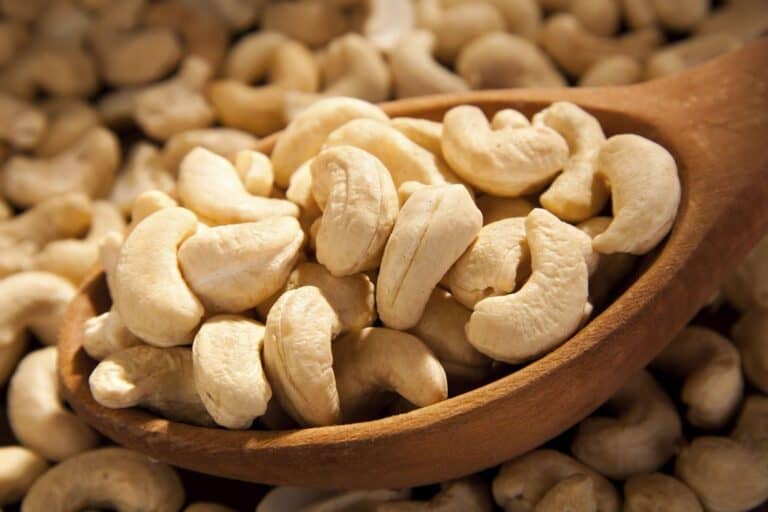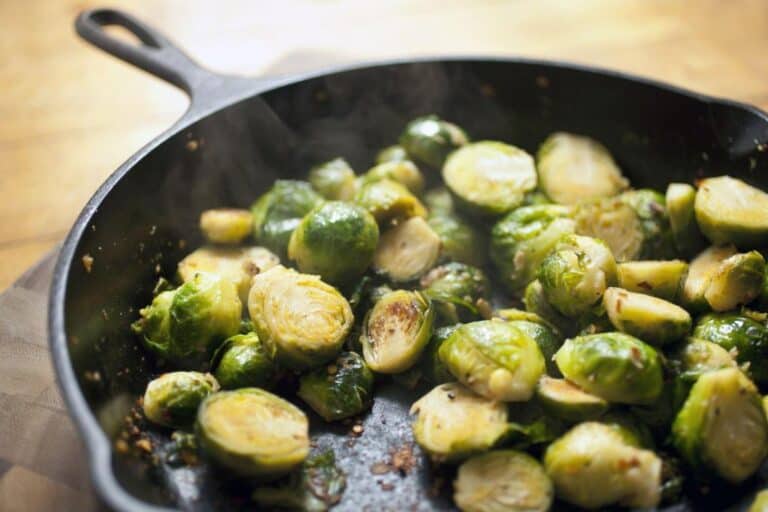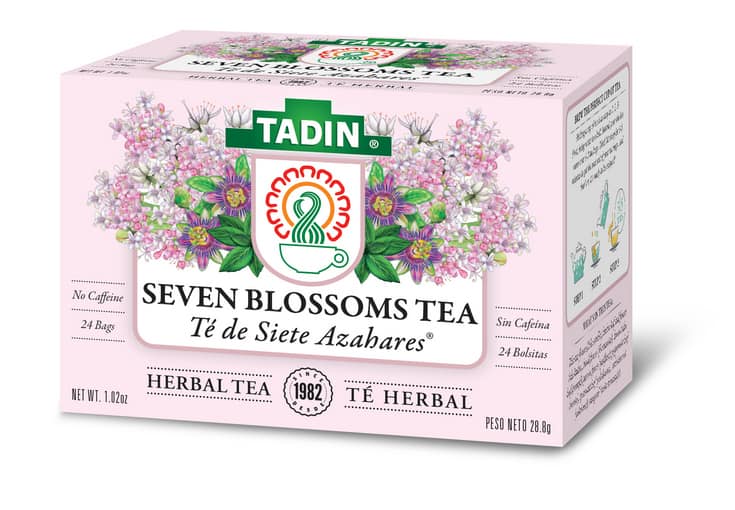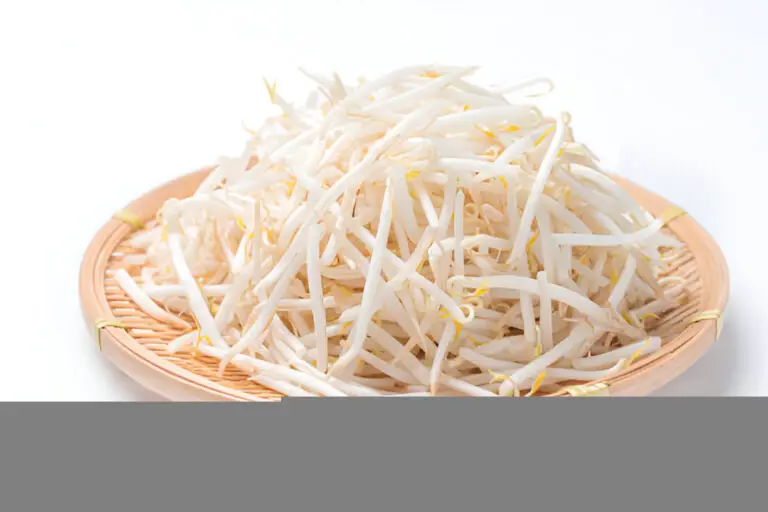Mung Bean Sprouts vs. Soy Bean Sprouts: he Key Differences You Should Know

Let me tell you, I used to think all bean sprouts were created equal. I’d toss them in a stir-fry or sandwich, never giving much thought to what kind they were. But once I started paying attention to what went into my body—and I mean really paying attention—I realized not all sprouts sing the same nutritional tune. That’s when I dove headfirst into the crunchy world of mung bean sprouts and soy bean sprouts.
So, if you’ve ever stood in the produce aisle scratching your head over those two nearly identical piles of white stringy veggies, you’re not alone. Let’s break down the differences between mung bean sprouts and soy bean sprouts—their looks, taste, nutrition, and how they play in your kitchen.
Spot the Difference: Mung Bean Sprouts vs. Soy Bean Sprouts
They might seem like twins at first glance, but get up close and you’ll notice some key differences. Here’s what jumps out:
| Feature | Mung Bean Sprouts | Soy Bean Sprouts |
| Appearance | Thin, white, and crisp with small heads | Thicker, yellow-tipped, with larger heads |
| Texture | Light and crunchy | Denser, chewier, and slightly stringy |
| Flavor | Mild and refreshing | Earthier and more bean-like |
| Size | Shorter, more delicate | Longer, bulkier |
I like to think of mung bean sprouts as the jazz musicians—light, crisp, and full of rhythm—while soy bean sprouts are more like the drummers: hearty, grounded, and hard to miss.
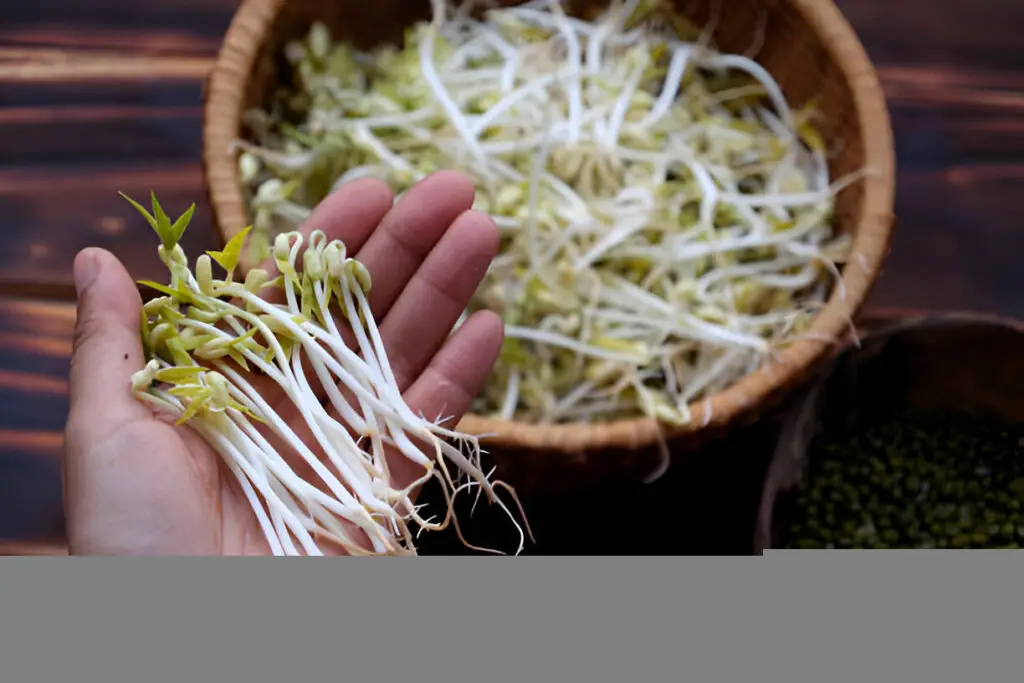
How They Grow: Not Just a Sprouting Contest
Both sprouts start with—you guessed it—beans. But how they develop during sprouting makes a world of difference.
- Mung beans sprout quickly, usually in 2–3 days, and need little fuss. They thrive in a cool, dark environment.
- Soybeans take longer to sprout—about 4–5 days—and require more care because they’re larger and denser.
I’ve grown both at home, and let me tell you, mung beans are the laid-back houseguests. Soybeans? They’re more like that high-maintenance friend who needs filtered water and extra napkins.
Nutritional Breakdown: Who Brings More to the Table?
Here’s where things get spicy—figuratively. These two sprouts come loaded with nutrients, but they shine in different departments.
| Nutrient (per 100g, raw) | Mung Bean Sprouts | Soy Bean Sprouts |
| Calories | 30 | 122 |
| Protein | 3g | 13g |
| Fiber | 1.8g | 6.2g |
| Vitamin C | High | Moderate |
| Iron | Moderate | High |
| Calcium | Low | Moderate |
| Folate | High | High |
⚖️ The Takeaway:
- Need a low-calorie crunch? Mung’s your sprout.
- Chasing plant-based protein? Soy’s got your back.
- Looking for an immune boost? Mung’s high vitamin C wins.
- Fighting fatigue or iron deficiency? Soy wins there.
| Read: Bean Sprouts Substitutes: Try These 7 Crunchy, Flavorful |
Taste Test: Mellow vs. Muscular
I’ve eaten both straight out of the sprouting jar—because why not? Mung bean sprouts have a fresh, barely-there flavor. They’re like the cucumber of the sprout world—cool, crisp, and content to let other flavors shine.
Soybean sprouts, on the other hand, bring more muscle. They have a beany taste, almost nutty, with a thicker bite. They don’t melt into the background—they want their solo.
In the Kitchen: How to Cook with Each
This is where the rubber meets the road. Depending on what you’re cooking, one sprout might work better than the other.
🍜 Best Uses for Mung Bean Sprouts:
- Stir-fries
- Spring rolls
- Pho garnish
- Fresh salads
- Cold noodle bowls
They cook quickly, so toss them in at the last second unless you want sad, wilted noodles.
🍲 Best Uses for Soy Bean Sprouts:
- Korean side dishes (like kongnamul muchim)
- Stir-fried with garlic and sesame oil
- Added to stews and soups
- Steamed as a warm salad topping
Soybean sprouts hold their shape and flavor better with heat. Just don’t go overboard—they can get chewy if you boil the life out of them.
| Read: Which Bean Sprouts Are the Healthiest and Have the Most Nutrients? |
Can I Use Mung Bean Sprouts Instead of Soybean Sprouts?
Yes, you can absolutely swap mung bean sprouts for soybean sprouts in many recipes, though they do have some differences in taste and texture. Mung bean sprouts, also known as green gram sprouts, are a staple in Korean cuisine—used in everything from soups and stews to dumplings and side dishes.
They have a crunchy texture and a mild, slightly nutty flavor. Compared to soybean sprouts, mung bean sprouts are shorter, a bit plumper, and don’t have the same prominent yellow heads.
When to Substitute:
- Great for stir-fries, salads, and light soups
- Best when a milder flavor or softer texture is preferred
- Not ideal when you want the earthy bite of soybean sprouts
| Feature | Mung Bean Sprouts | Soybean Sprouts |
| Size & Shape | Shorter, thicker | Longer, with yellow heads |
| Texture | Crunchy but tender | Firmer and more fibrous |
| Common Use | Versatile in Korean food | Often used in hot soups |
Cultural Footprint: More Than Just a Side Dish
In Korean cuisine, soybean sprouts are a staple. They’re not just a garnish—they’re a whole dish, dressed up with sesame oil, garlic, and a pinch of chili. That dish, kongnamul, graces nearly every table. It’s comforting, nutritious, and surprisingly addictive.
Mung bean sprouts, by contrast, are big in Chinese, Vietnamese, and Thai cooking. Think crisp toppings for banh mi or light additions to pad Thai. They’re there to add texture, not steal the spotlight.
Health Goals: Which One Should You Eat?
Need a cheat sheet? I’ve got you covered:
| Your Goal | Best Sprout Pick |
| Lose weight | Mung bean sprouts |
| Build muscle | Soy bean sprouts |
| Boost immunity | Mung bean sprouts (vitamin C) |
| Improve digestion | Soy bean sprouts (fiber) |
| Support heart health | Soy bean sprouts (iron + protein) |
| Add light crunch to meals | Mung bean sprouts |
Personally, I rotate both. If I’m hitting the gym hard, I’ll bulk up with soy sprouts. When I want something light and refreshing? Mung it is.
Safety First: Raw or Cooked?
Here’s a quick PSA: raw sprouts can carry bacteria like E. coli and Salmonella, especially if mishandled.
I rinse my sprouts thoroughly and usually cook them lightly, even if just a quick blanch. For store-bought, always check the date and give ’em a sniff. If they smell funky or feel slimy, send them packing.
Final Thoughts: Same Family, Different Stories
Mung bean sprouts and soy bean sprouts might share the same last name, but they’ve got different personalities.
- Mung bean sprouts are the clean-cut, crisp cousin—light, refreshing, and easy-going.
- Soy bean sprouts are the hearty sibling—bold, nutrient-packed, and a little tougher to chew, but worth the effort.
I’ve come to love both for what they bring to the table—literally. Depending on my mood, my meal, or my macro goals, one always has a spot in my kitchen.
🥢 Bonus Tip: Sprout Them at Home
If you really want fresh flavor, sprouting at home is cheaper, cleaner, and oddly satisfying. Here’s my quick-start guide:
What You Need:
- Mung or soy beans (organic preferred)
- A mason jar + mesh or cheesecloth lid
- Clean water
Steps:
- Soak beans in water overnight.
- Drain, rinse, and leave in a jar tilted upside down.
- Rinse twice daily.
- In 2–5 days, boom—sprouts ready to eat!
Mung beans grow faster and are easier for beginners. Soybeans take more patience but reward you with dense, protein-packed sprouts.
So… Which One Wins?
Honestly? Both.
They’re not fighting for first—they’re just playing different roles in your food story. Mung is your crisp backup dancer; soy is your bold lead singer. You need both to keep the flavor and the nutrition in harmony.
If you’ve only been eating one, I challenge you—this week—try the other. Toss it in your next stir-fry, soup, or sandwich. Let your taste buds decide who gets top billing.

